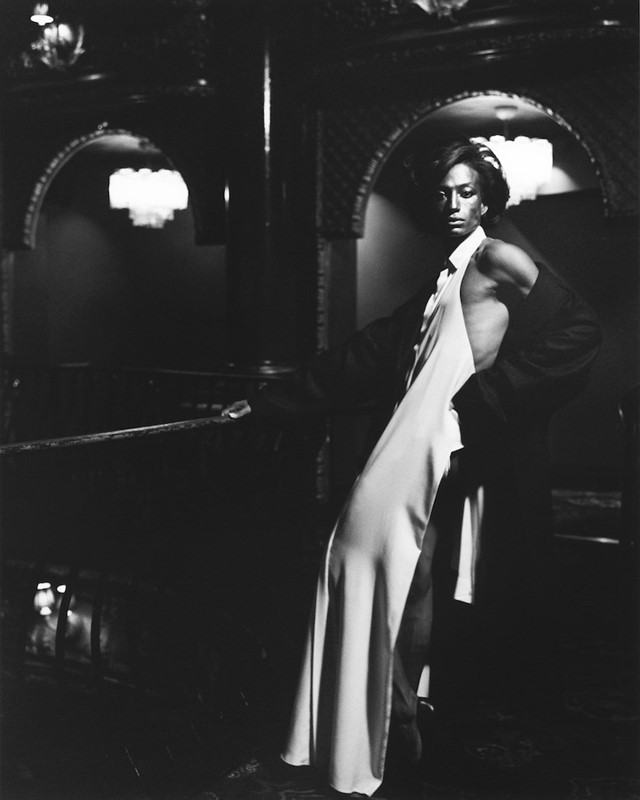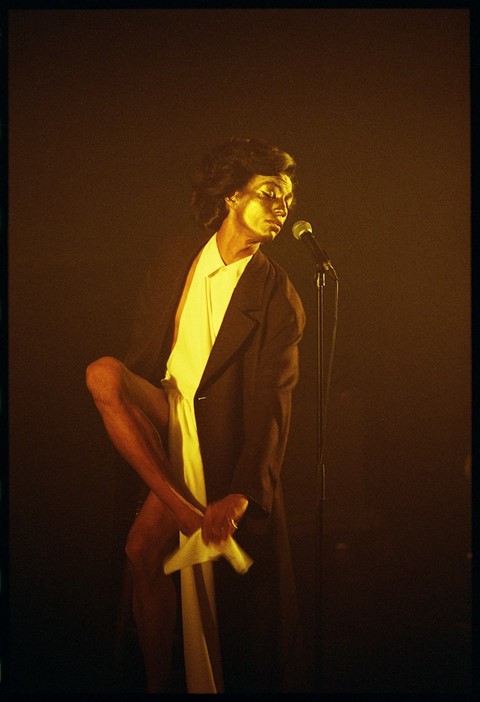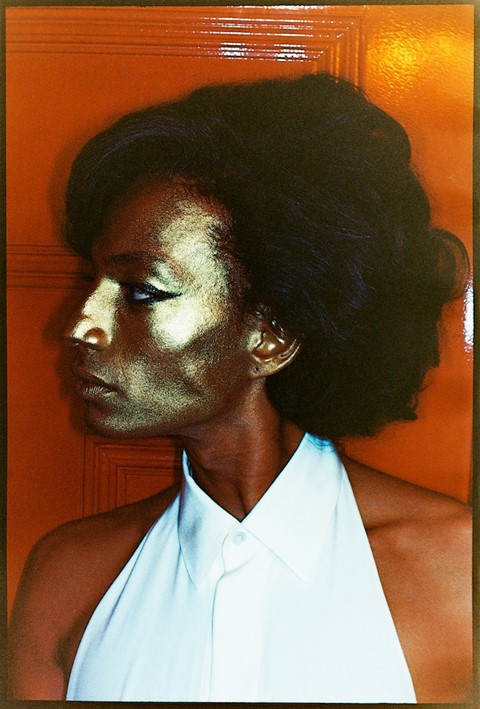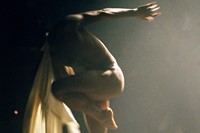Closing Frieze in October, the dancer and choreographer showcased a one-off performance of their show with custom looks crafted by Kim Jones for Dior
For the Jamaica-born, Florida-raised classically trained dancer, model and choreographer MJ Harper, a full-length solo show has been a long time coming. Last month, marking the end of Frieze week, Harper presented a one-off performance of their one-person show at London’s KOKO called Arias for a New World – the first of its kind for a project that’s been evolving and expanding for the best part of a decade. With musical direction by Antoni Komasa-Lazarkiewicz, artistic consultation by Matt Lambert, styling by Katy England, a wardrobe designed by Kim Jones for Dior, and production by Gainsbury&Whiting, Harper has drawn together a team that’s the stuff of legend, enlisted to aid in the craft an ambitious performance that expands upon Harper’s astonishingly sentimental practice.
The show is far from Harper’s first flirtation with the world of fashion. Having first met a then-emerging Grace Wales Bonner in 2015, Harper and the London-based menswear designer collaborated on previous fashion presentations and a performance for Wales Bonner’s exhibition A Time for New Dreams at the Serpentine. Harper’s first showing of Arias for a New World took place two years ago in Berlin, where they’ve lived since 2015 since leaving London following an injury that meant they were to cease dancing with the Wayne McGregor Company. It was later, on the dancefloor of Berghain in Berlin, that Harper forged a friendship with designer Stefano Pilati – who were in conversation for AnOther’s Autumn/Winter 2020 issue with a cover story styled by Katy England – as well as starring in Pilati’s label Random Identities’ fashion films and campaigns.
These fashion designers – Wales Bonner, Pilati, and now Kim Jones – occupy the liminal space that defies pure menswear, providing something more sensitive and impassioned, in turn pushing the boundaries of gendered clothing. Harper, too, hopes to occupy this space in between, inviting audiences to join the artist not just as audience members but as equals, where attendees are involved in the telling of Harper’s personal story, which encompasses themes of ritual, religion and eroticism. “When you dance, you also have the ability to open up space and time, and you’re a vessel for something sacred,” Harper told AnOther previously. “When the curtain draws and you’re hit by the gust of wind and the lights, you see the audience waiting to be moved by the energy from the stage. Race, religion, sexuality, class – it all just dissolves when someone allows the work to enter them.”

The word ‘Aria’, which is Italian for ‘air’, is a technical term in an opera where one voice sings alone, often for the purpose of explaining what is going through the mind of the character in the moment. For Harper, this is a voice that’s been reaching a crescendo for almost a decade, and is finally brought together in one visionary work of performance art.
Here, MJ Harper introduces their ambitious show, and the fashion that helped to transport it.
“Arias for a New World is a collaborative exercise eight years in the making. [It is] an exploration of Tanztheater during the age of the algorithm, and a vessel to seek and question codes and constructs. I hope people walk away feeling the strength and majesty of community, and encouragement to trust and embrace the liminal space.
“London has played a significant role in my professional and personal development. I had the great honour of being a member of Company Wayne McGregor from 2010 until 2015. Those years were deeply transformative years and being in the company felt like being a part of a family. To this day, I look back at that time with reverence as sharing space with my colleagues felt like being in the company of superheroes. Working with Wayne was much more than just movement. It was a cerebral and corporal experience on levels of the highest of frequencies. He shared with us many gifts, and one of the most profound was the gift to cultivate and question our field of vision of the world over and over and over again.

“The process of creating the costumes was a very inspiring one. Being in close conversation with Katy England and Kim [Jones], I wanted to continue to explore an ongoing creative puzzle that I have devised for my practice, which is centred around social construction. I find the way that Pina Bausch’s Tanztheater Wuppertal explored the construction of gender to be quite profound. As well, [I was] thinking of the Chitlin Circuit, a collection of performance venues in the American south where performers such as Billie Holliday, Aretha Franklin and The Four Tops would perform. Formal dress for African-American recording artists was a way of shielding and protecting performers; and in a way, allows individuals to transcend the various constructs that society places on bodies, and still continue to be ‘othered’.
“Kim has kept a thoughtful and sensitive eye on my work for some years now. He first invited me to be a part of ‘The Dior Sessions’ and has been a beautiful and supportive friend from day one. The space he is holding is truly a space of grace. With Katy and Kim, we dove into continuing to explore the complexities of these various social codes. In the end, there is a men’s coat, a men’s shirt, formal suits for composer Antoni Komasa-Lazarkiewicz and musician Thomas Moked Blum. Heels and a jockstrap remain a cheeky staple from my character’s development from previous iterations of the work.”



